Abstract
Functional outcomes of clinical trials are often reported as number of dependencies in activities of daily living (ADLs). Quality-weighting for the ADLs has not been reported. We designed and pilot-tested ADLIB (ADL Index Builder), a multimedia computer program, that presents ADL health states to subjects and elicits from subjects a rating for the quality of life of each health state. Subjects, who were patients over age 50 without previous computer experience, found the program easy to use. Health care professionals specializing in geriatrics confirmed that the ADL presentations used in the program are in accord with typical practice in scoring ADLs. We plan to use the program to obtain population-based preference ratings that can be used to assess efficacy of clinical trials and to provide quality-weights for cost-effectiveness analysis.
Full text
PDF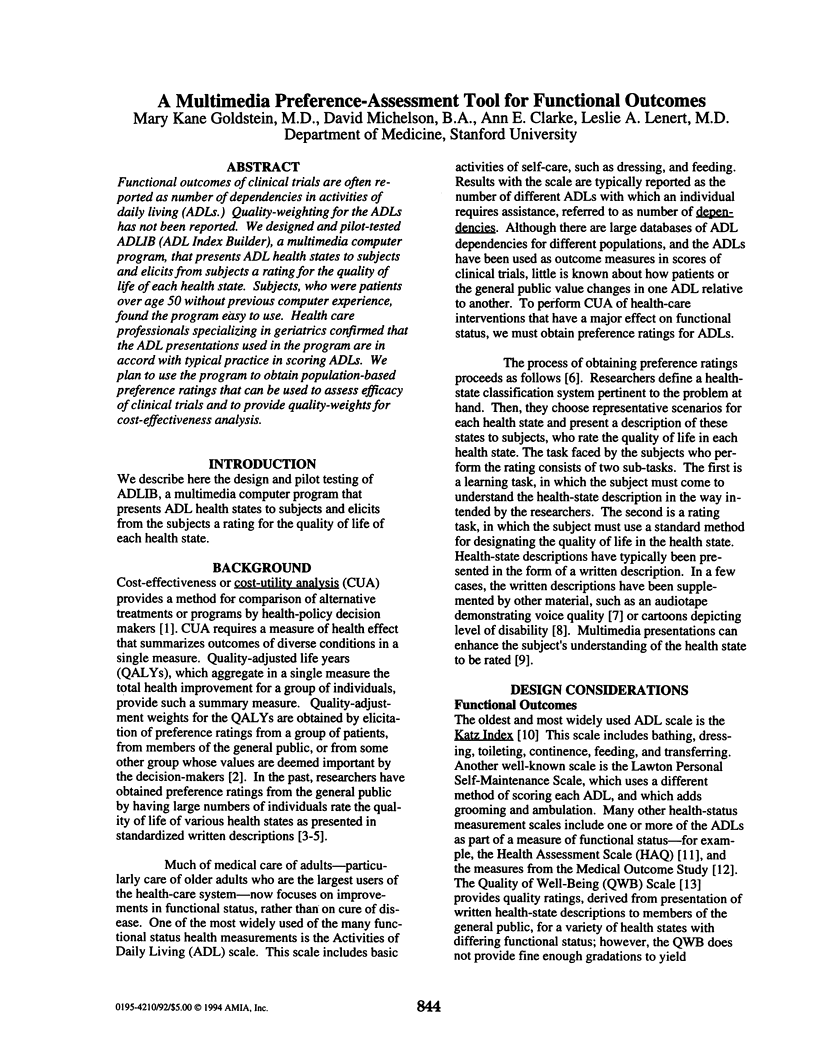
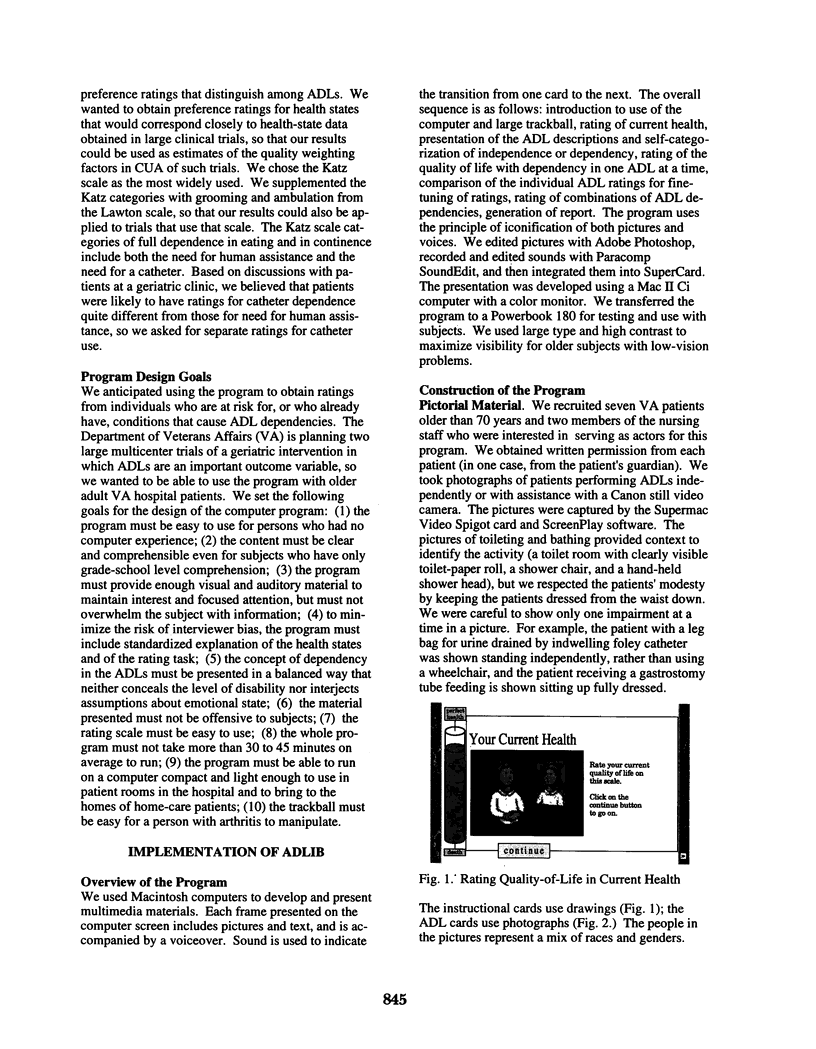
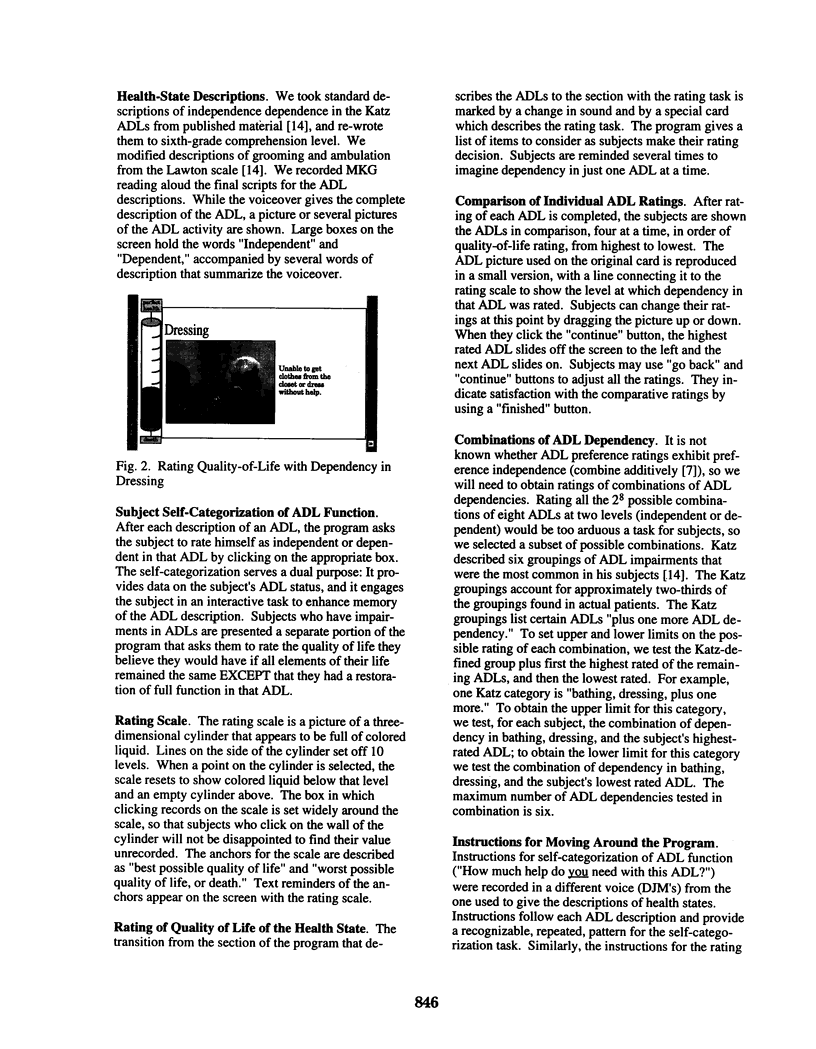
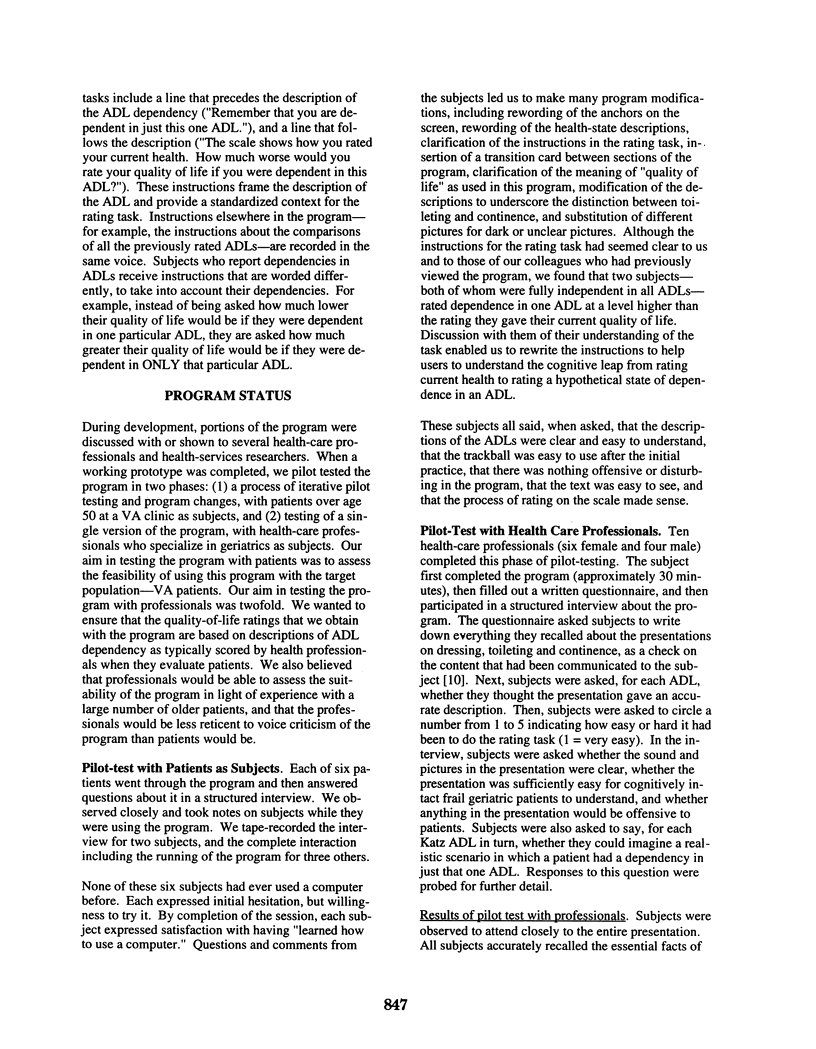
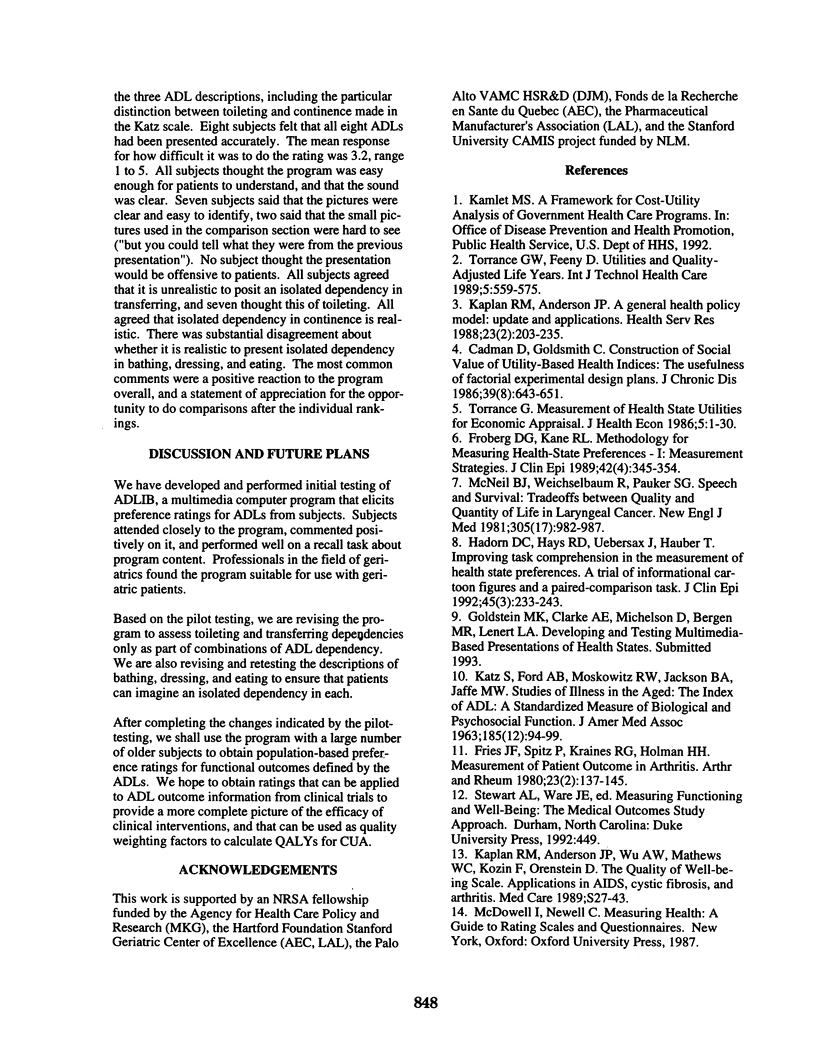
Images in this article
Selected References
These references are in PubMed. This may not be the complete list of references from this article.
- Cadman D., Goldsmith C. Construction of social value or utility-based health indices: the usefulness of factorial experimental design plans. J Chronic Dis. 1986;39(8):643–651. doi: 10.1016/0021-9681(86)90189-x. [DOI] [PubMed] [Google Scholar]
- Fries J. F., Spitz P., Kraines R. G., Holman H. R. Measurement of patient outcome in arthritis. Arthritis Rheum. 1980 Feb;23(2):137–145. doi: 10.1002/art.1780230202. [DOI] [PubMed] [Google Scholar]
- Froberg D. G., Kane R. L. Methodology for measuring health-state preferences--I: Measurement strategies. J Clin Epidemiol. 1989;42(4):345–354. doi: 10.1016/0895-4356(89)90039-5. [DOI] [PubMed] [Google Scholar]
- Hadorn D. C., Hays R. D., Uebersax J., Hauber T. Improving task comprehension in the measurement of health state preferences. A trial of informational cartoon figures and a paired-comparison task. J Clin Epidemiol. 1992 Mar;45(3):233–243. doi: 10.1016/0895-4356(92)90083-y. [DOI] [PubMed] [Google Scholar]
- Kaplan R. M., Anderson J. P. A general health policy model: update and applications. Health Serv Res. 1988 Jun;23(2):203–235. [PMC free article] [PubMed] [Google Scholar]
- McNeil B. J., Weichselbaum R., Pauker S. G. Speech and survival: tradeoffs between quality and quantity of life in laryngeal cancer. N Engl J Med. 1981 Oct 22;305(17):982–987. doi: 10.1056/NEJM198110223051704. [DOI] [PubMed] [Google Scholar]
- Torrance G. W., Feeny D. Utilities and quality-adjusted life years. Int J Technol Assess Health Care. 1989;5(4):559–575. doi: 10.1017/s0266462300008461. [DOI] [PubMed] [Google Scholar]
- Torrance G. W. Measurement of health state utilities for economic appraisal. J Health Econ. 1986 Mar;5(1):1–30. doi: 10.1016/0167-6296(86)90020-2. [DOI] [PubMed] [Google Scholar]



